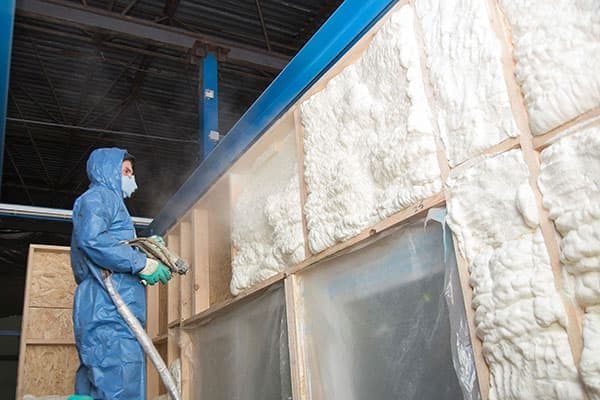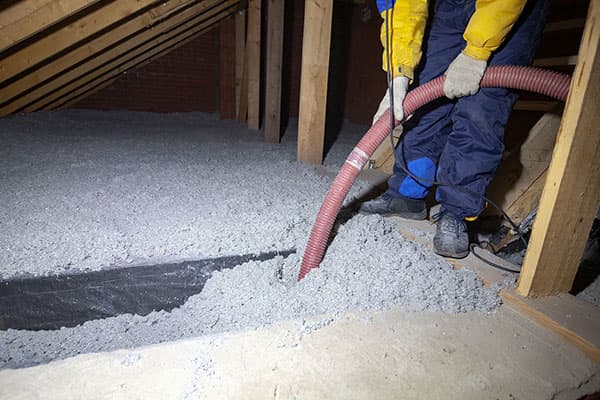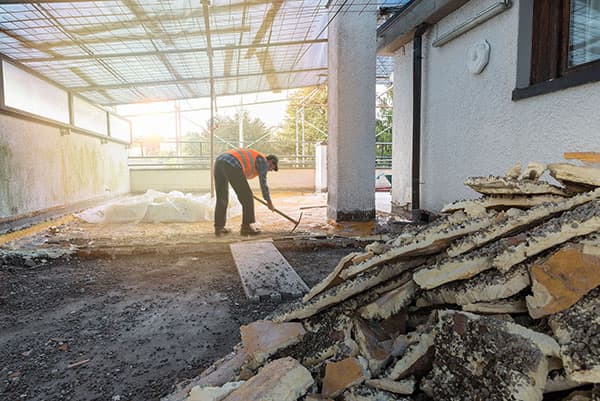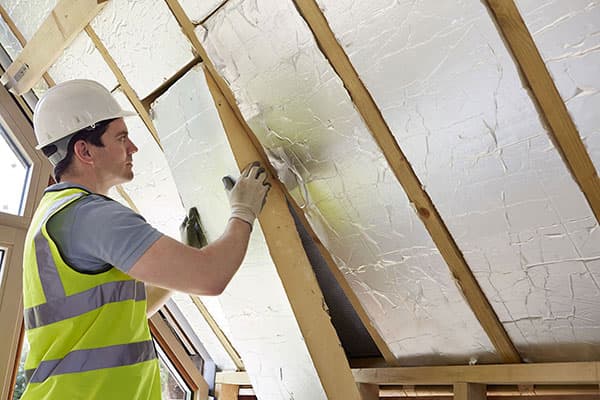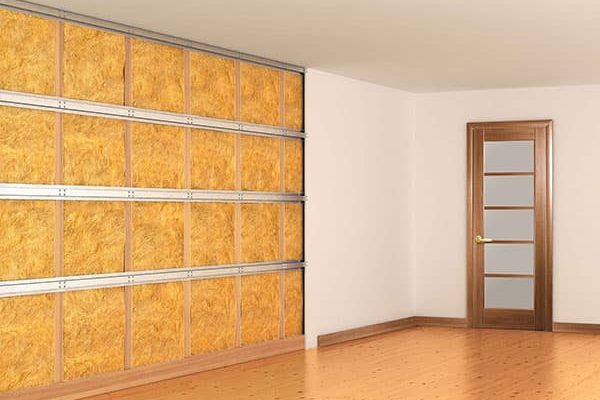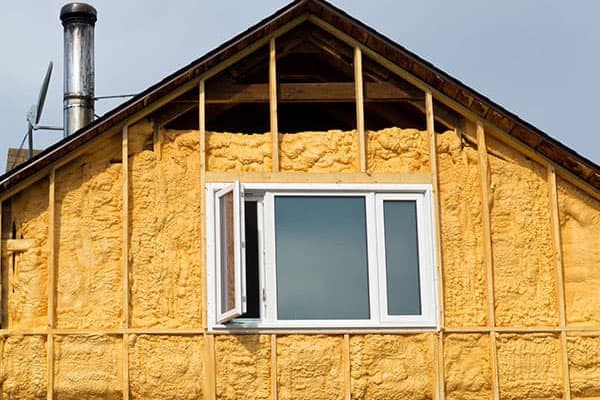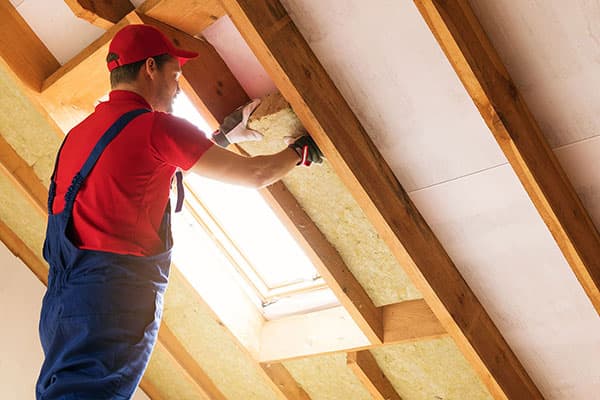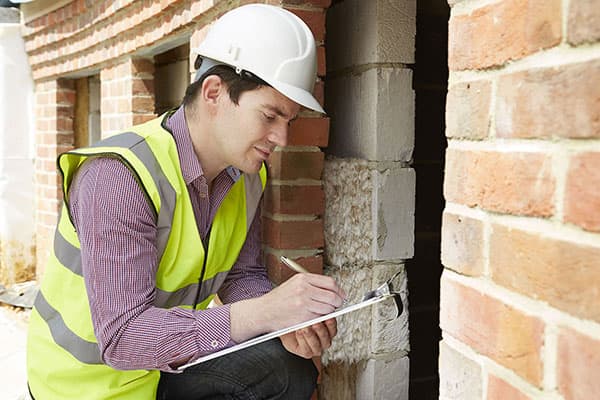Blown-in insulation is a cost-effective way to insulate walls and ceilings when installed by professionals. This insulation can give you long-term energy savings with a lower cost for initial installation compared to other methods. However, blown-in insulation isn’t the best choice for everyone or every application. Other types of insulation like spray foam, may be more expensive but can save you on other expenses and inconveniences over the years. There are also many different types of blown-in insulation material available and they all have pros and cons to consider. It’s best to consult with a professional to understand what insulation solution is best for your insulation needs.
Proinsulate has completed thousands of installations in the Edmonton area. We can recommend the best insulation that will fit your property needs and budget. Contact us to schedule a professional assessment and discover all of your choices.
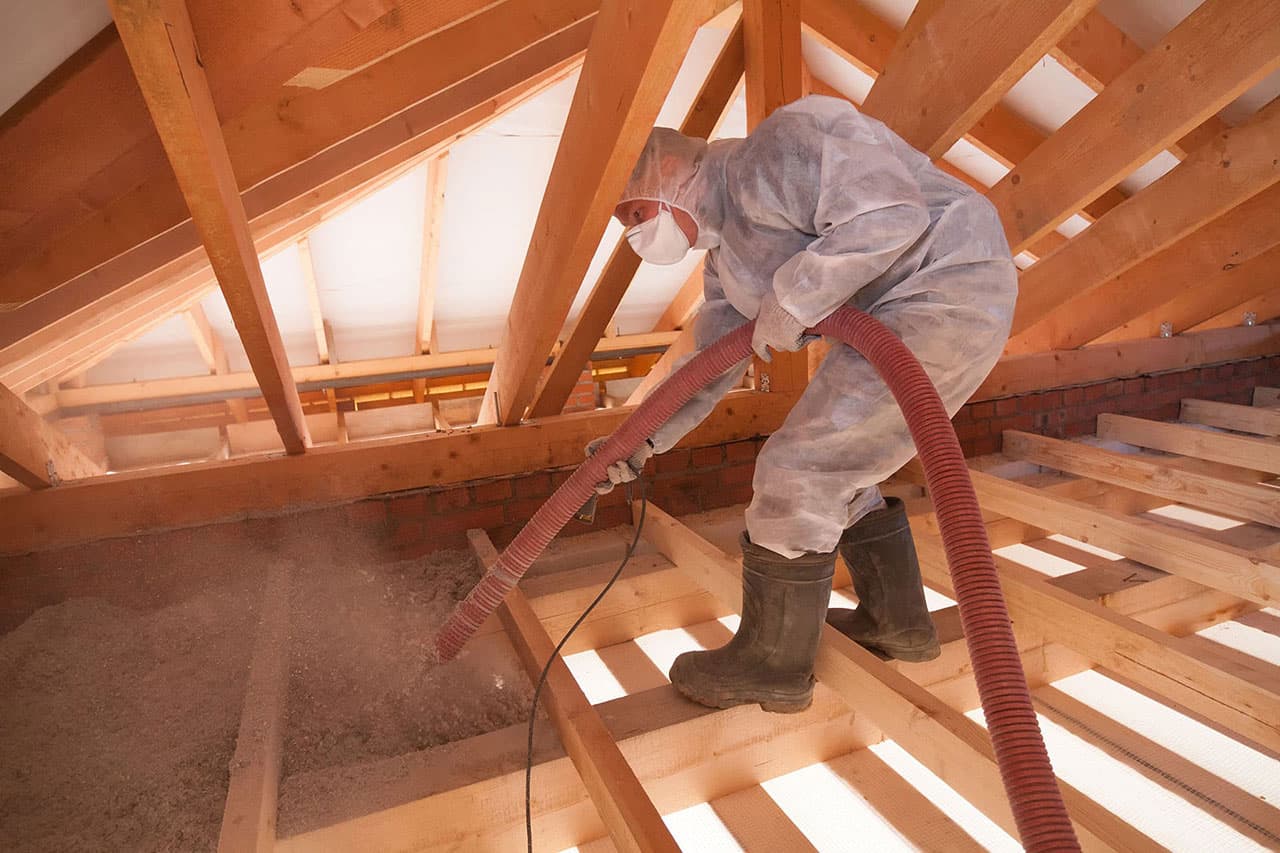

Blown-In Insulation Installation
Blown-in insulation is installed between existing ceiling joists and wall studs. Different types of insulation materials are available including cellulose, loose-fill fiberglass, and Rockwool. As the name blown-in implies, this material is applied with special blowers which deposit the proper amount where it’s needed.
A significant benefit of blown-in insulation is coverage. This insulation can surround and fill small cracks and crevices which can be a source of cold air leaks. Standard insulation bats can be difficult to apply to uneven joints with cracks or gaps. Blown-in insulation can also provide some sound reductions and provide a more pleasant home environment.
Blown-in insulation can be straightforward to install between ceiling joists because access is available through the attic. A professional installer can achieve a thorough application that protects this important area from air leaks and gives you the best possible energy savings. Wall stud installations present a challenge but can be handled by professionals. While the equipment and insulation material is the same, holes often need to be drilled at the top of each stud space for access, usually on the exterior. After installation, these holes are filled by plugs that match your siding or exterior.
One difficulty when installing blown-in insulation between wall studs is working around pipes and wiring. It’s common for water or sewer pipes to block the smooth flow of insulation from the blower. This can lead to air gaps and incomplete coverage inside walls. This is why it is important to hire a professional installer who will have the tools and experience to minimize air gaps when installing insulation between wall studs and can accommodate most structures that follow local code guidelines.
Three Types of Blown-in Insulation
Insulation material comes in different types. Each has its own benefits and drawbacks. Some types of fill insulation are more economical or eco-friendly, while others offer improved fire resistance. Every material has its own R-value, which is a measure of its insulating effectiveness. Depending on your application, different thicknesses of blown insulation may be needed to achieve a target R-value. Contact us to find out what R-value of blown-in insulation is needed in the Edmonton area.
Cellulose
Cellulose fill is the most common blown-in insulation available. This material is made from finely shredded cardboard of newspaper which has been chemically treated to resist mold and fire. Cellulose is the most economical type of insulation you can get. It’s often made from recycled materials so it can be environmentally friendly as well.
While Cellulose is a popular choice, it does have a few drawbacks. This type of insulation material can be harmed if you have a pipe or roof leak. Wet cellulose can get soggy and compacted which can reduce its insulation ability, or R-value. While it’s usually chemically treated to resist mold, this isn’t perfect protection. Soggy cellulose insulation can hold water for a long time which can lead to mold and mildew. Cellulose can also pose a health hazard if inhaled, it’s recommended to be wearing a mask and take any other necessary protective measures when working near the insulation.
Loose-fill fiberglass
Made from glass that has been liquefied and spun into fibers, loose-fill fiberglass is used in some blown-in insulation installs. This material has a few drawbacks including a lower R-value compared to cellulose. It’s also a potential allergen and contacting it can be a skin irritant. Fiberglass also poses an inhalation hazard. Any time you work around or disturb fiberglass insulation it’s recommend to be wearing protective equipment. Fiberglass is not a popular choice for blown-in insulation due to these reasons. If you have blown-in fiberglass insulation in your home and you’d like to have it removed and replaced with better alternatives, contact our team for assistance.
Rockwool
Also known as mineral wool, Rockwool blown-in insulation resembles raw sheep’s wool. This material is an excellent thermal and noise barrier. Rockwool has the added benefit of being fireproof, and won’t fuel or propagate flames. This can be an excellent material when fire resistance is important or mandated by building codes. Rockwool is also naturally resistant to mold and mildew and is resistant to sagging and settling which means its R-value stays stable over time. It’s also durable and can provide excellent insulation for many years.
Rockwool does have its disadvantages, which include increased cost and not being biodegradable. Like fiberglass, this material poses an inhalation hazard and protective gear is needed when handling it. It’s also heavier than cellulose or fiberglass blown-in insulation, and might not be suitable for installation between residential ceiling joists.
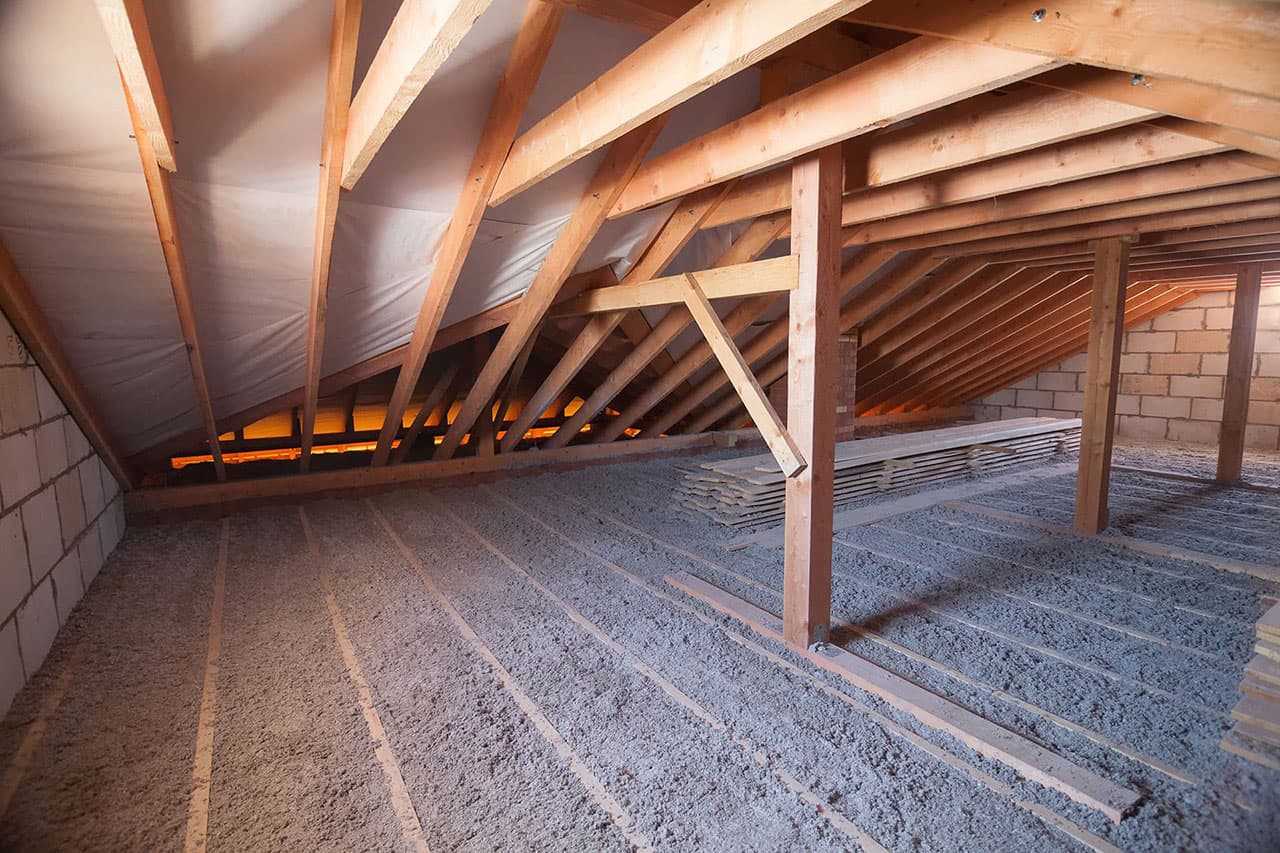

Disadvantages to Blown-In Insulation
There are some drawbacks to blown-in insulation. Depending on the material it may be necessary to replace insulation at some time in the future. Cellulose has the shortest life expectancy of any blown-in insulation material and can range from 20 years to the lifetime of your house or structure. In contrast, Rockwool is the most durable material and can last up to 100 years.
Moisture is the main threat to blown-in installation and is particularly harmful to cellulose. Any pipe or roof leak can be a source of moisture that can collect inside walls causing rot. Rockwood is resistant to moisture, and cellulose is treated to resist both mold and mildew. However, both of these materials are capable of holding moisture. A roof or pipe leak which saturates blown-in insulation may mean insulation replacement will be necessary.
Some materials, most commonly cellulose, are susceptible to settling. Blown-in insulation between wall studs will gradually settle over time leaving a small gap at the top. It’s possible to add more insulation to correct this, but most residential homeowners neglect this step as the gap is small in most cases.
Blown-In Insulation Removal
Over time blown-in insulation can become contaminated and need replacement. Water damage, mold, mildew, and rodent infestations can cause the insulation to lose its effectiveness and become a source of odors and allergens. This process involves vacuuming out the old insulation and replacing it with fresh material.
Replacement is a task best handled by professionals. Removing contaminated blown-in insulation can expose you to inhalation and contact hazards. Protective gear and experience are needed for safe insulation removal and replacement.
Blown-In Insulation vs. Spray Foam
Spray foam is an important alternative to blown-in insulation. This insulation method involves applying a foam which can expand 30 to 60 times it’s original size. For commercial and residential applications, spray foam offers excellent insulation performance. It can conform to irregular surfaces, and cover cracks and gaps that are difficult to insulate with other methods.
Spray foam insulation is more expensive per square inch than blown-in materials like cellulose or rockwool. This extra cost is typically offset by spray foam’s much higher insulation effectiveness, measured as R-value. Compared to most blown-in insulation materials, spray foam provides higher energy efficiency and an airtight seal when properly applied.
An important advantage to spray foam compared to blown-in insulation is settling: when dry, spray foam stays in place and keeps some flexibility. This makes it a resilient insulation material which won’t shift or settle over time. In comparison, blown-in insulation has a tendency to settle over the years. This can create openings which will reduce the insulation’s effectiveness.
Frequently Asked Questions about Blown-In Insulation
Proinsulate Service Areas
Our team works in Edmonton and surrounding areas including Stony Plain, Spruce Grove, St. Albert, Sherwood Park, Fort Saskatchewan, and Leduc. If you have any questions about an insulation project in your area, don’t hesitate to reach out to our team.










